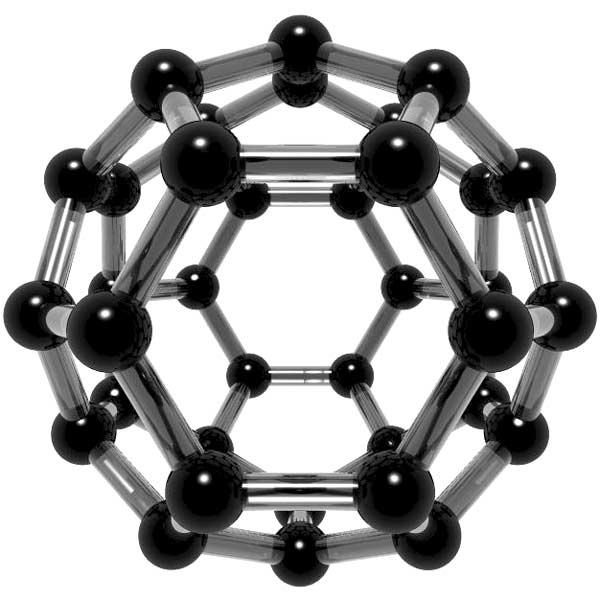The isolation of C36 is an accomplishment which arises from a long-running collaboration aimed at predicting and isolating novel materials. Our collaborators include theoreticians Dr. Jeffrey Grossman, Dr. Michel Cote, Professor Marvin L. Cohen and Professor Steven G. Louie, all in the U.C. Berkeley Physics Department. Our research on C36 is in part motivated by their theoretical calculations. The lower fullerenes such as C36 are predicted to have more highly strained carbon bonds, resulting in exciting properties for these molecules such as very high chemical reactivity as well as high temperature superconductivity (see references below). We are continuing to experimentally characterize this new material. For example, we have verified the higher reactivity of C36. Ironically, this higher reactivity was a major hurdle in the synthetic process. C36 is suspected to be very air and light sensitive and must be handled as such throughout the extraction process. Currently, our group is in a collaboration with Professor Don Tilley in the College of Chemistry to explore the reactivity of this molecule. Josh Kriesel, a graduate student in that laboratory, is performing a comprehensive survey of chemical reactions to try to gain insight into the chemistry of this material. We are also characterizing the physical properties of C36 by a variety of techniques including x-ray diffraction, transmission electron microscopy (TEM), electron energy loss spectroscopy (EELS), and nuclear magnetic resonance (NMR). We have grown films and crystals of C36 to study its transport properties as well as for scanning tunneling microscopy (STM). We are also attempting to alkali-dope these samples to vary their electronic properties. The pristine samples appear to be insulators with a 0.8 eV band gap.Additional images of the C36 molecule are available in our C36 Image Gallery.
Our experimental techniques are reported in:
Theoretical studies on C36 are reported in:Piskoti, C. Yarger, J. and Zettl, A. A new carbon solid, C36 Nature 393, 771 (1998).
Grossman, J. C., Cote, M., Louie, S. G. and Cohen, M. L. Electronic and structural properties of molecular C36 Chem. Phys. Lett. 284, 344 (1998). Grossman, J. C., Cote, M., Louie, S. G. and Cohen, M. L. Electron-phonon interactions in solid C36 Phys. Rev. Lett. 81, 3, 697 (1998).
